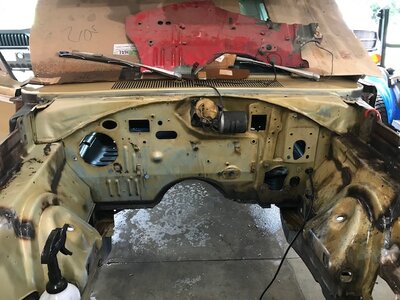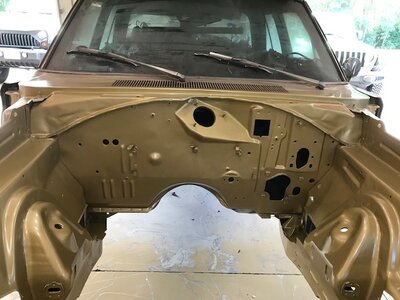I took out the back seat and had MUCH better access to the front edge of the pan.
After the trunk is done, I'm still 3 weeks away from the delivery of the gas tank. The engine is still in the machine shop and the guy works part time so I don't have an accurate gauge of when I'd even be able to set the engine. THis leaves me with some free time to ponder what next to do. The sensible thing would be to replace the lower control arm bushings since they are shredded. I have another K member that I intended to swap in, fully welded and reinforced. It is actually the original one to my red car....I pulled it when I had another 1970 K member from a '70 Belvedere that was also welded and reinforced.
Confused yet?
Anyhow...With no engine in place, this is the best time to do this sort of thing.
Also, I'd like to get ahead of that rear tire fitment problem that all 68-70 Chargers have: This odd outer wheelhouse bulge:
I'd like to improve the clearance somehow. I am not cutting off the quarter panels to do it but I think that after scraping the undercoating off, I could cut out some of the bulge and weld in a patch that offers more room. It won't look as good as this:
But it will be an improvement.
Oh, another thing, The firewall:
I may one day install a Classic Auto Air system in this car. One thing that I didn't like was that the factory A/C cars had multiple holes in the firewall that required block-off plates to hide. For this car, I might weld over the right side of the firewall with a clean Non A/C firewall from the '70 Belvedere stub that I used to repair this car.


















